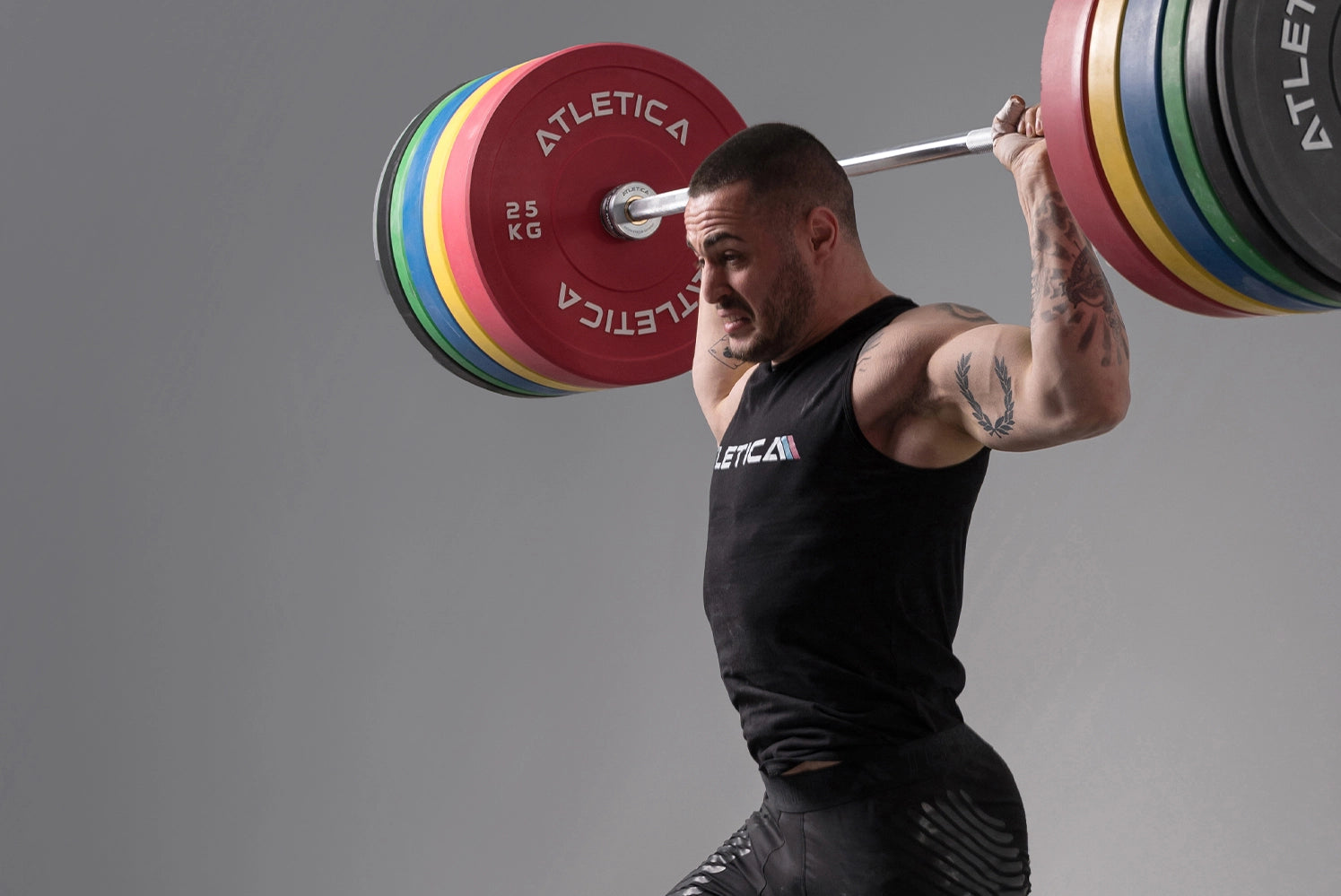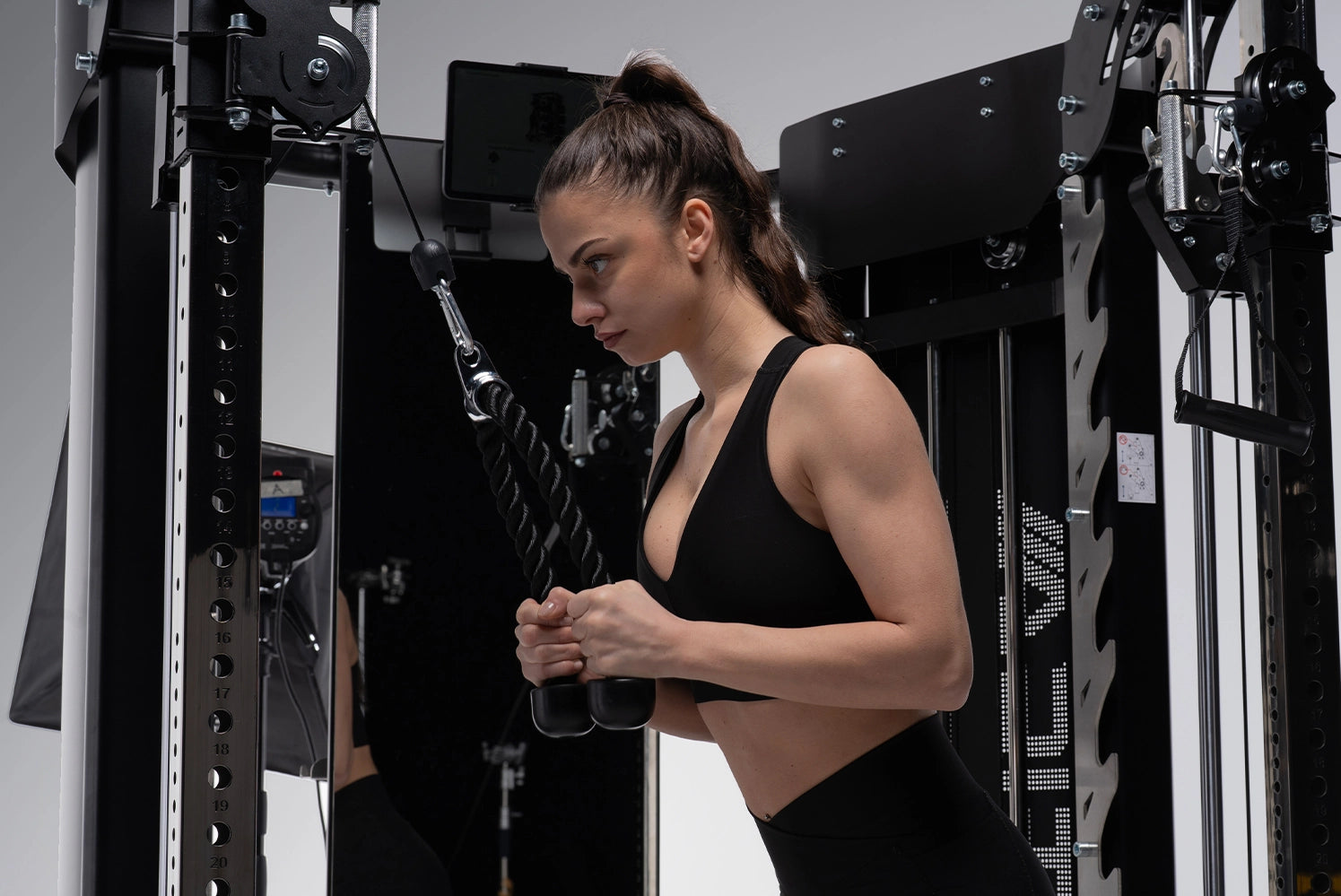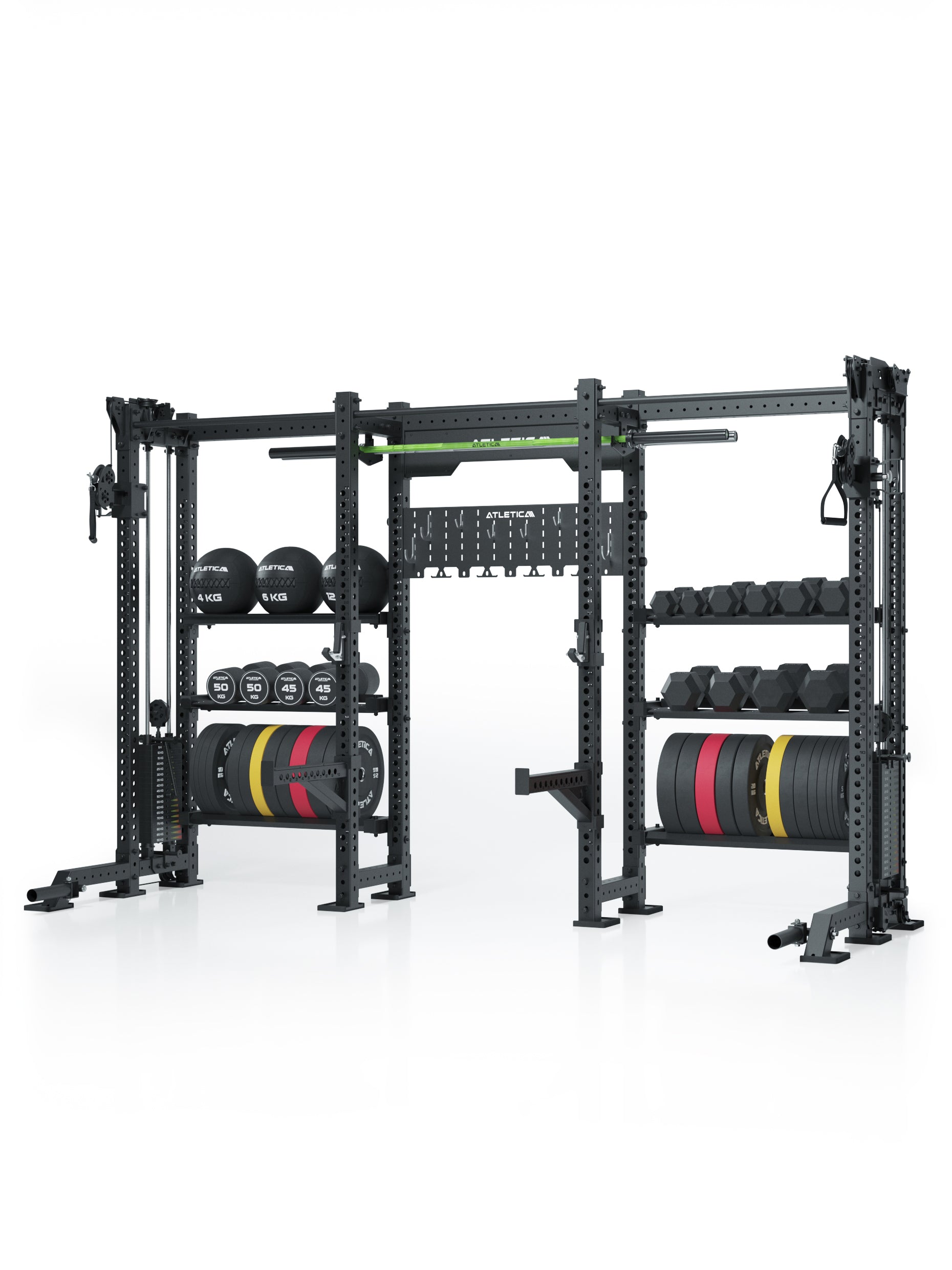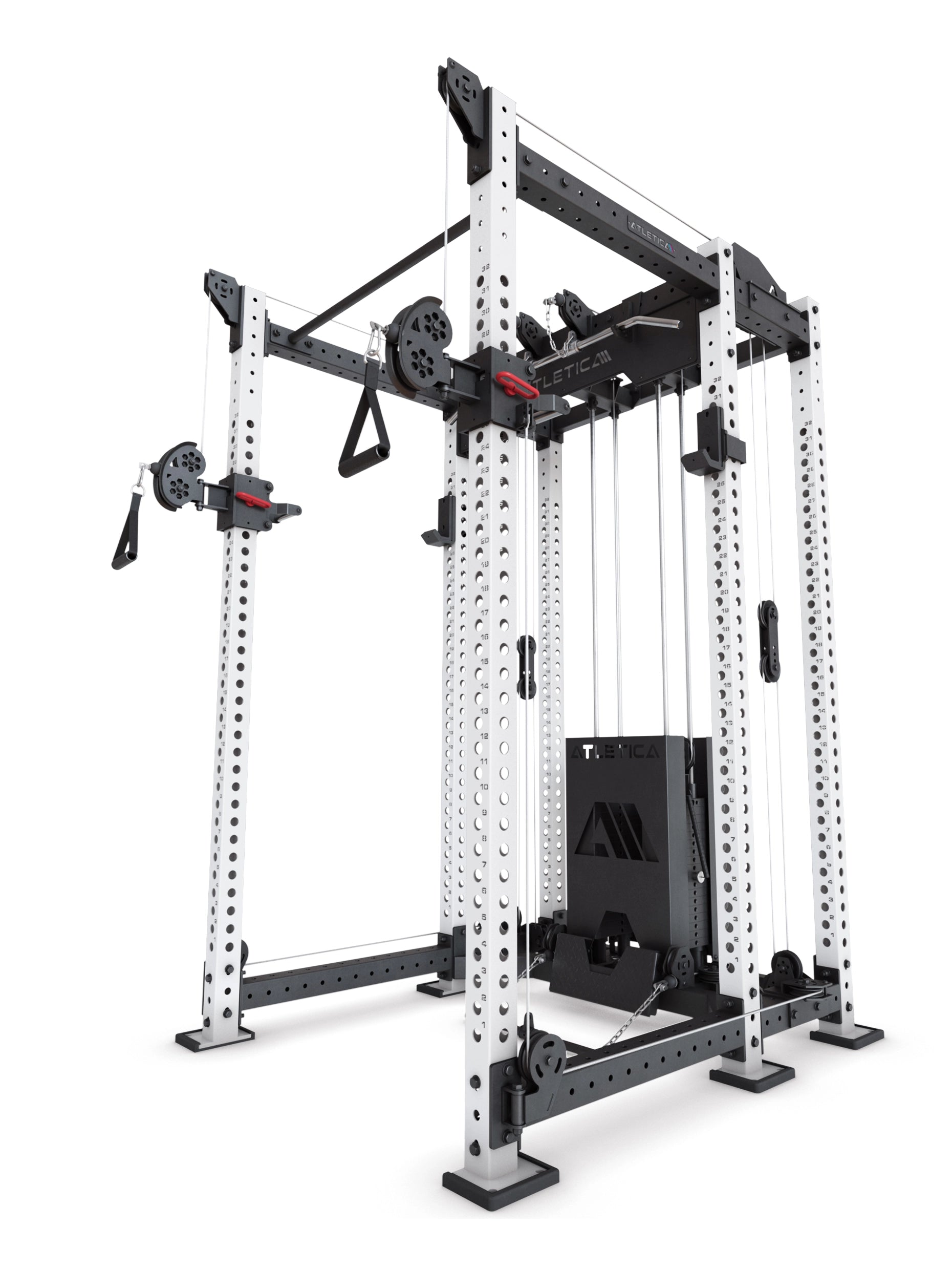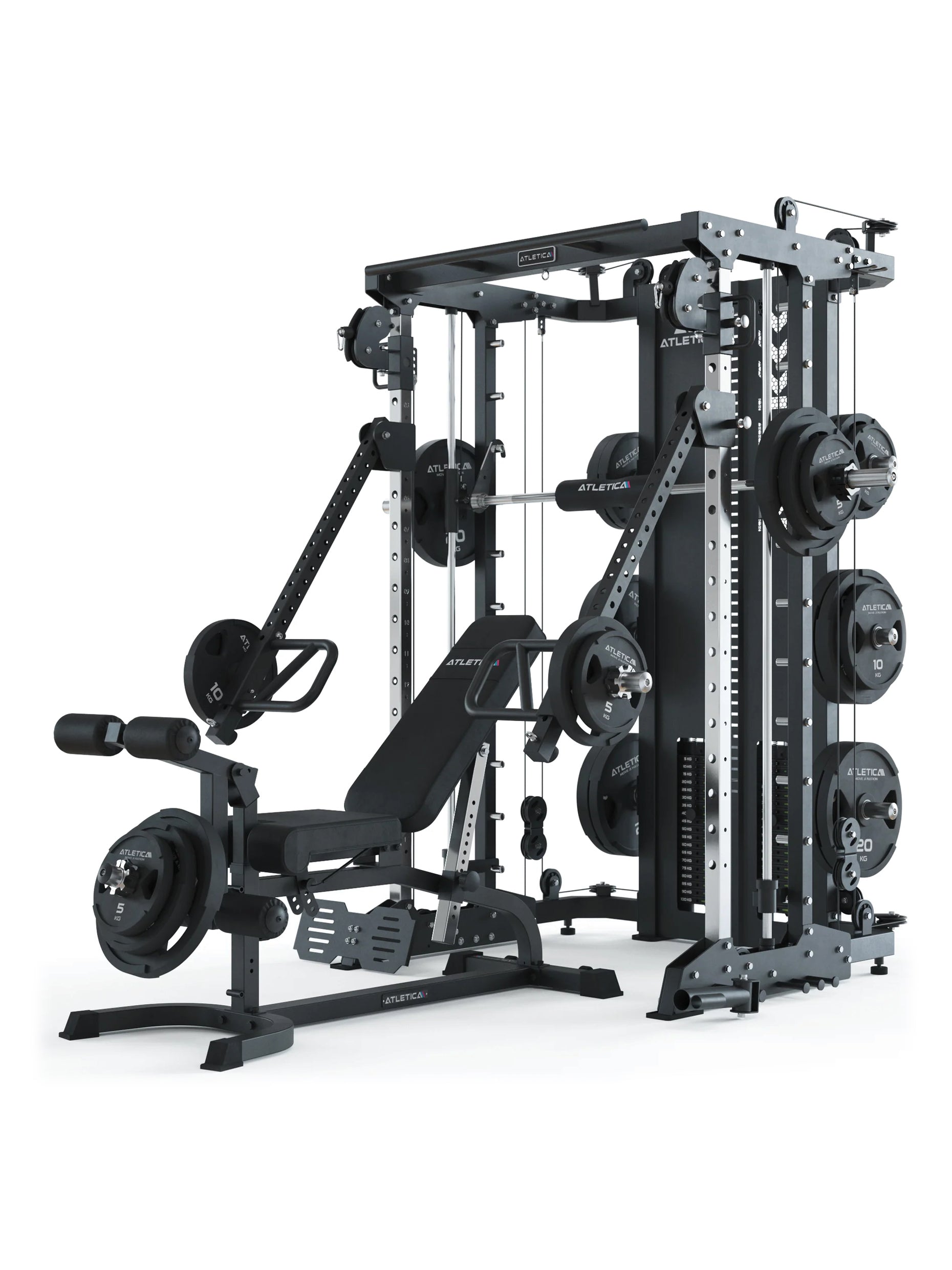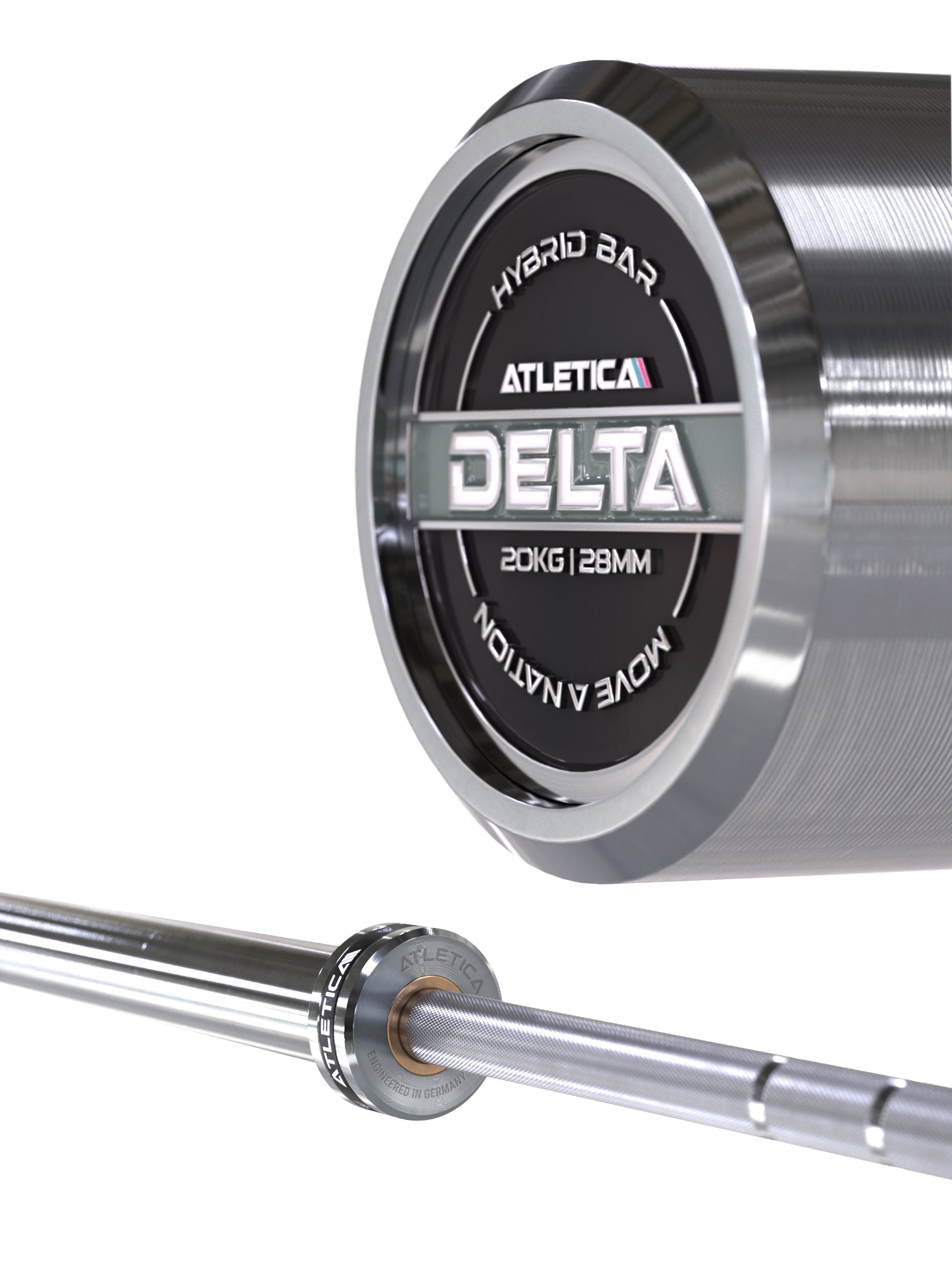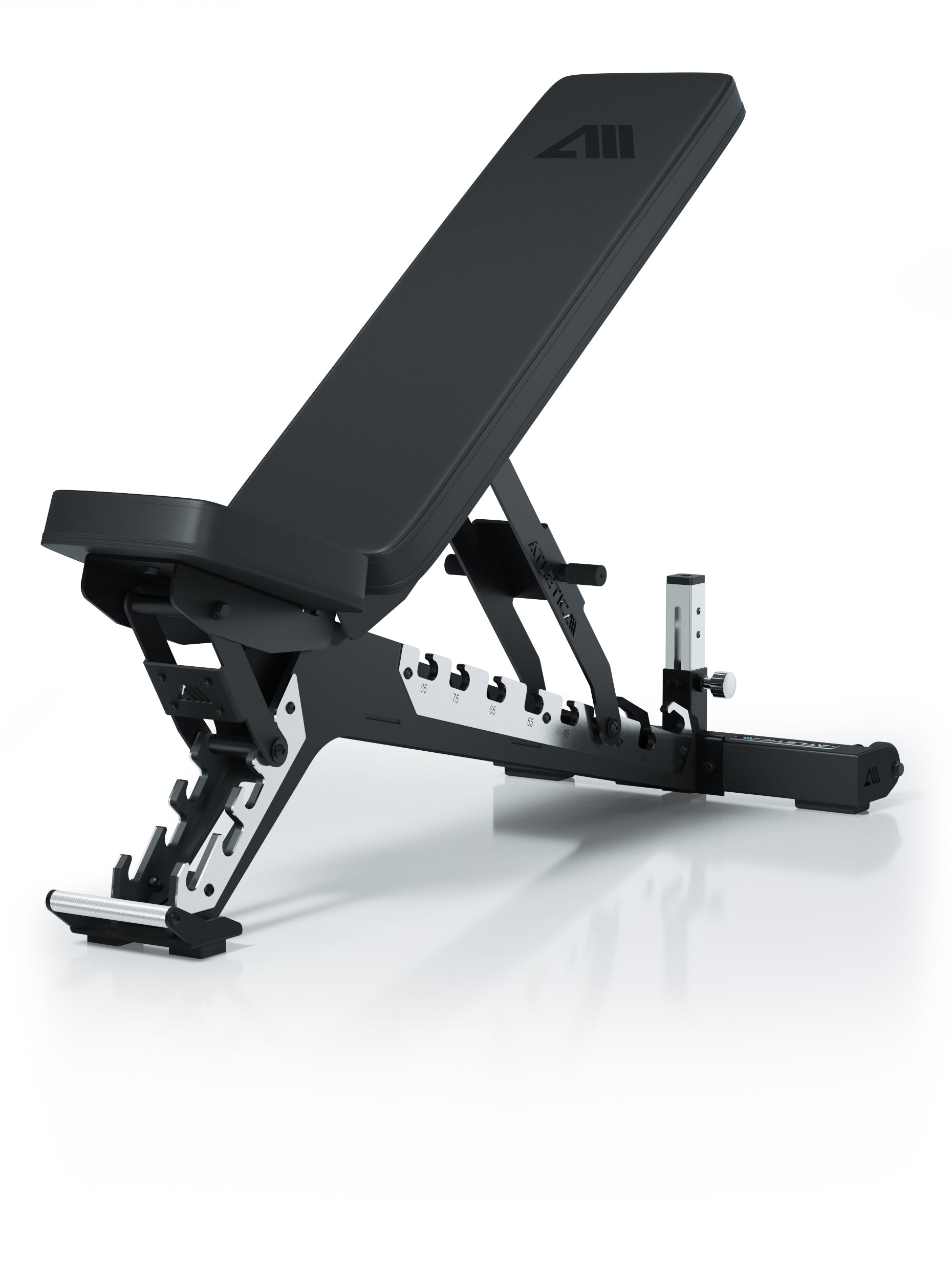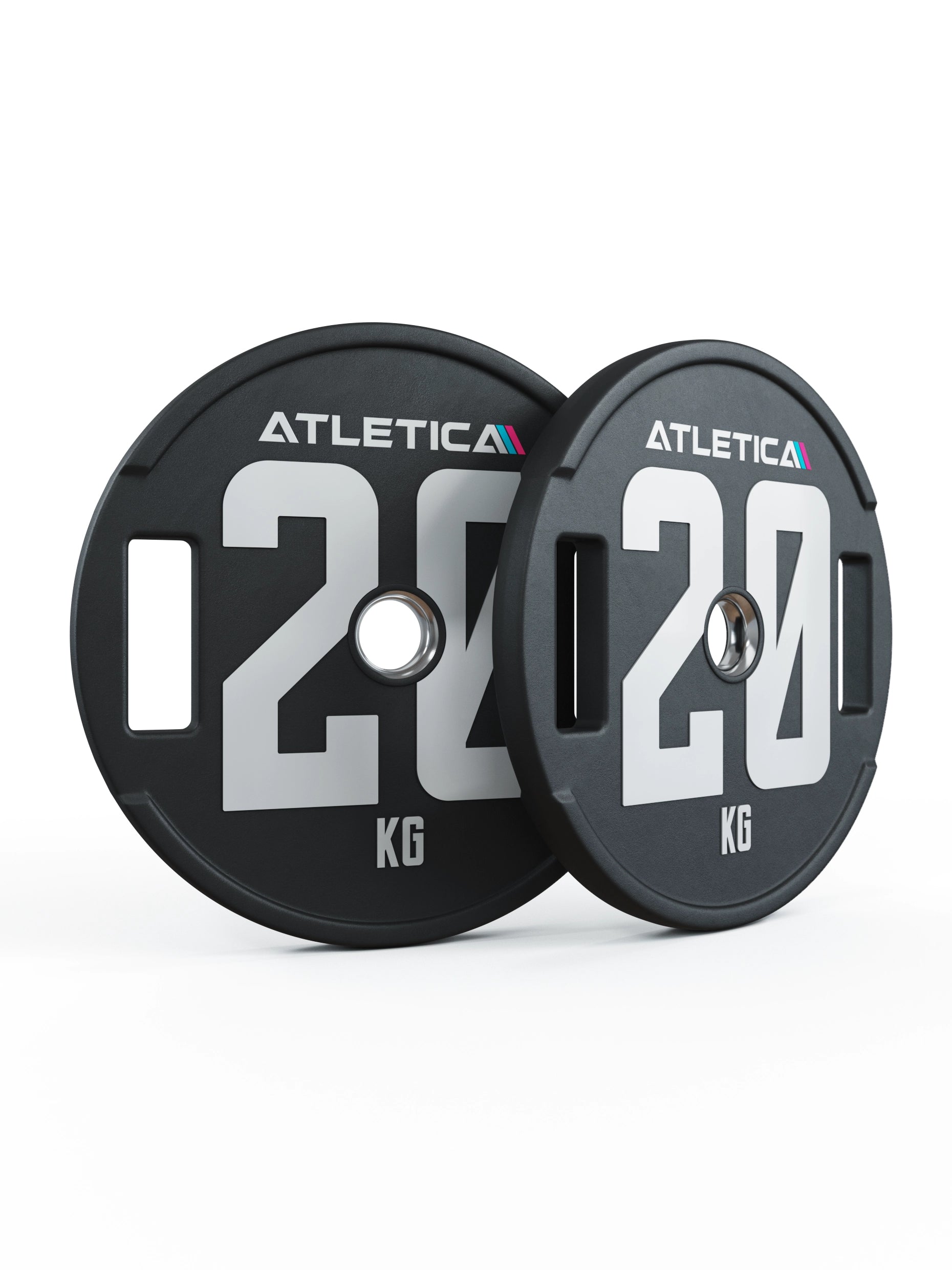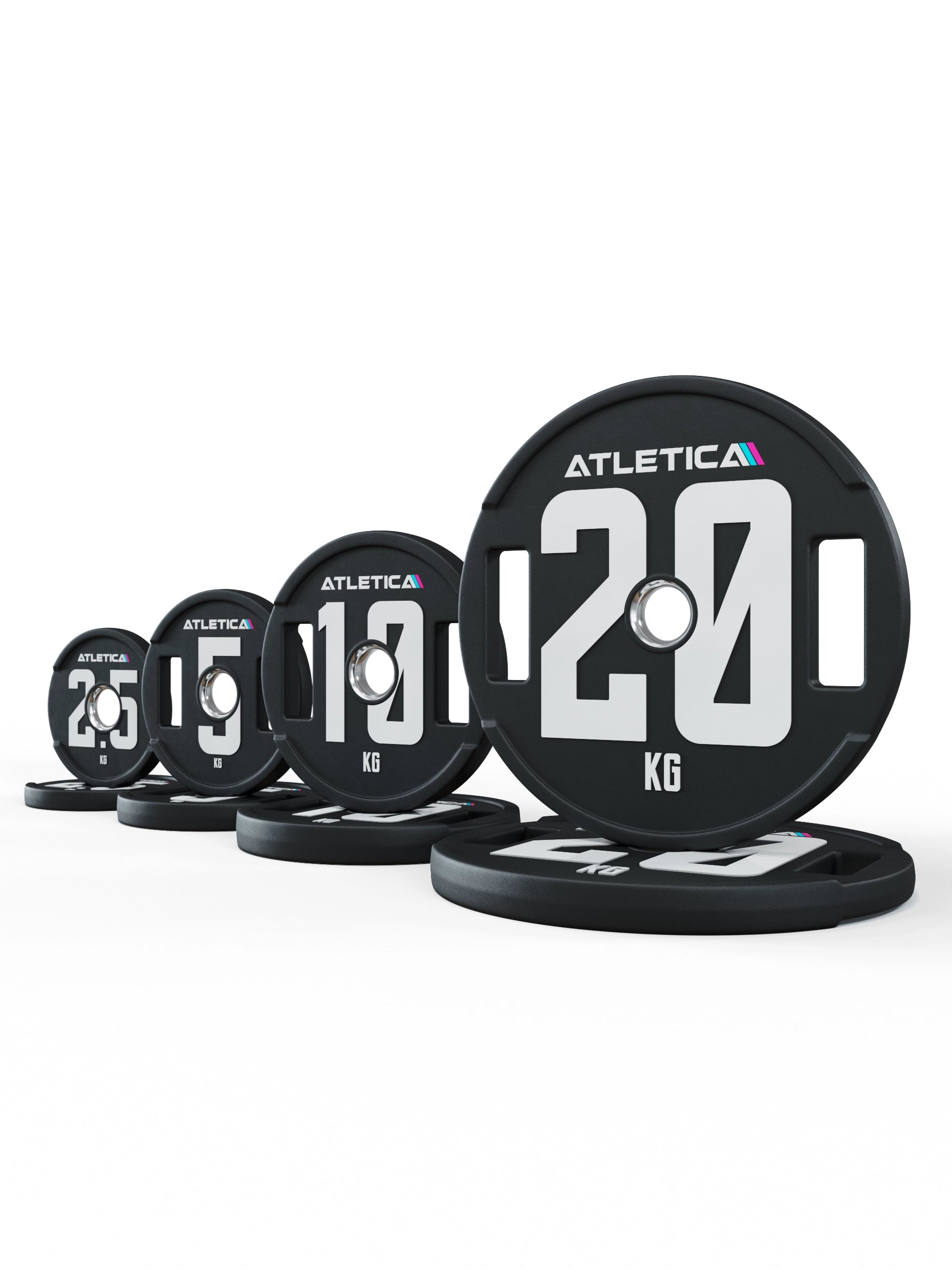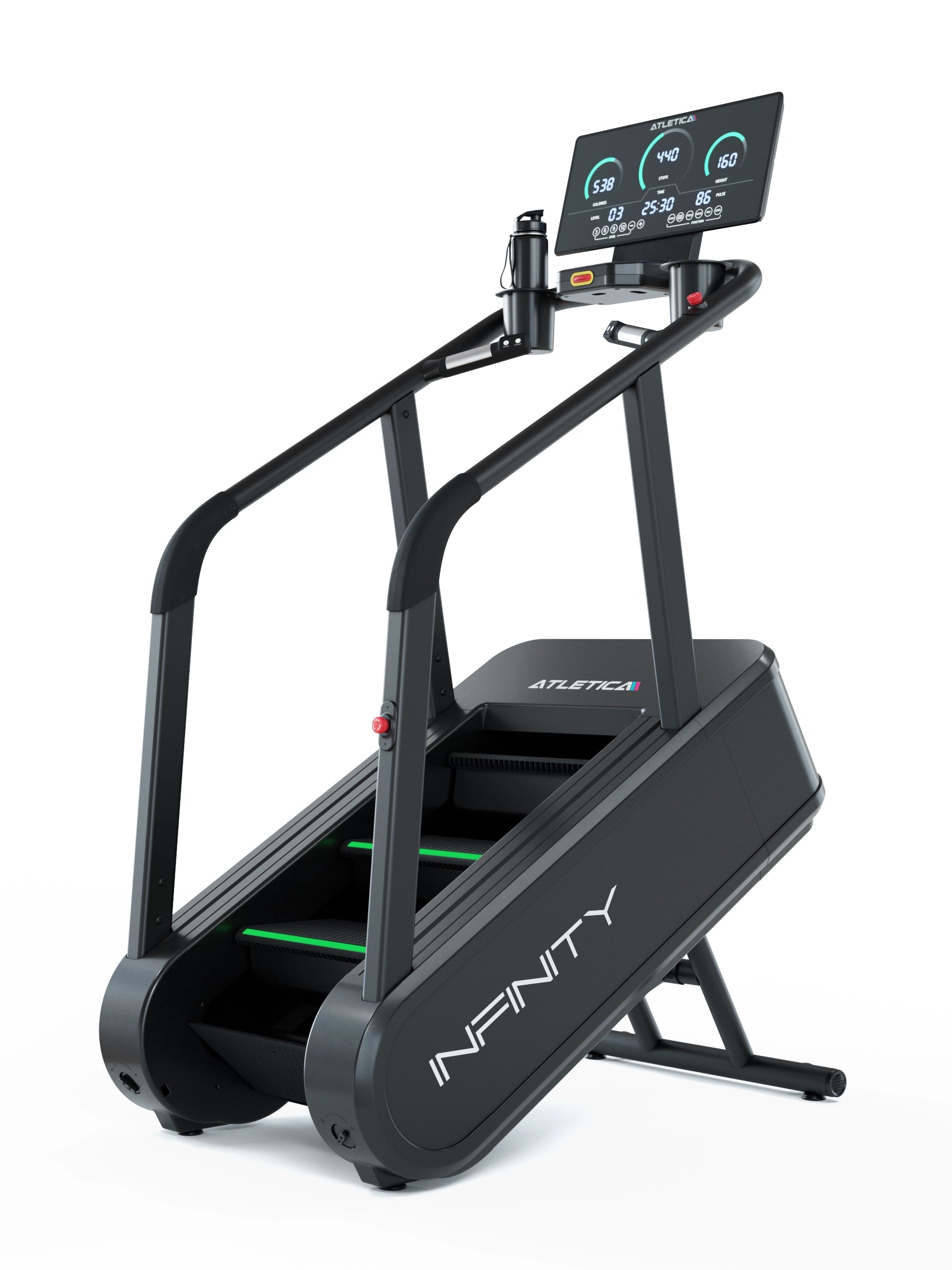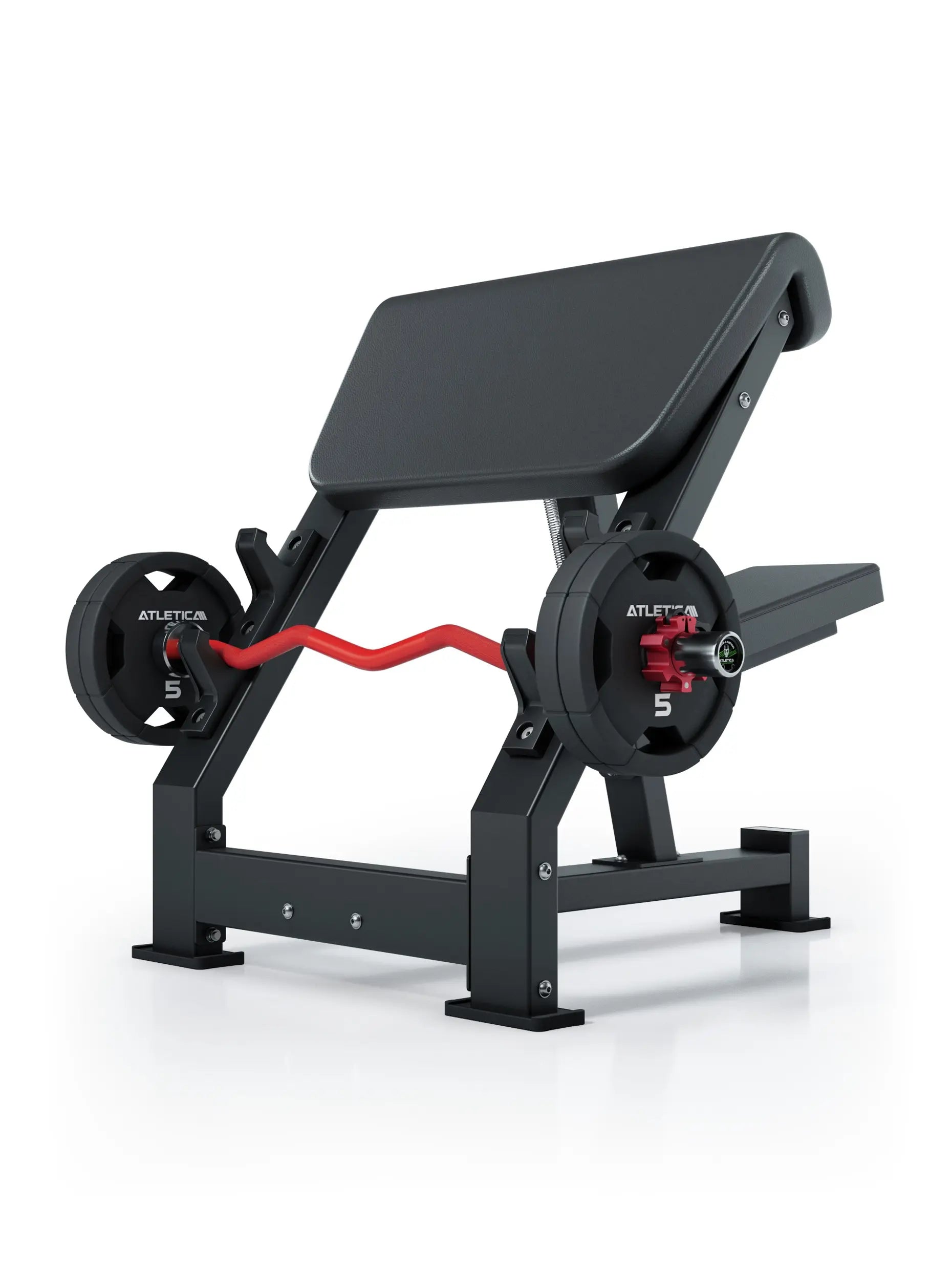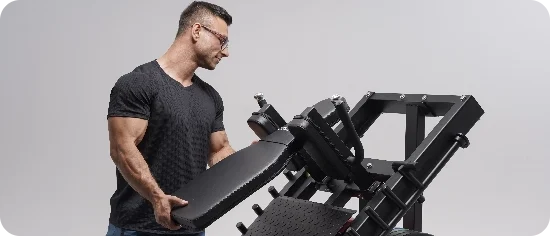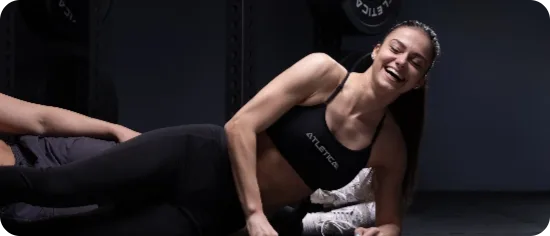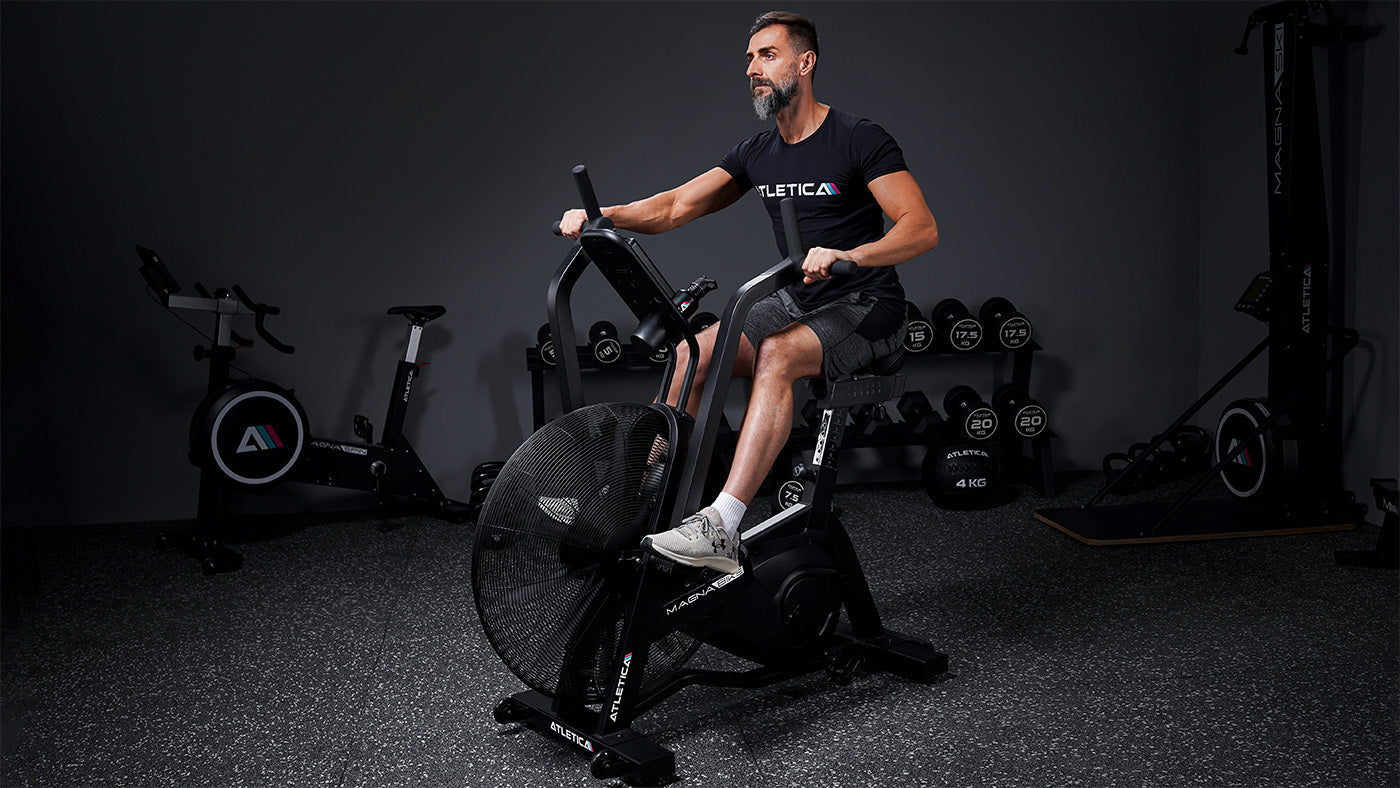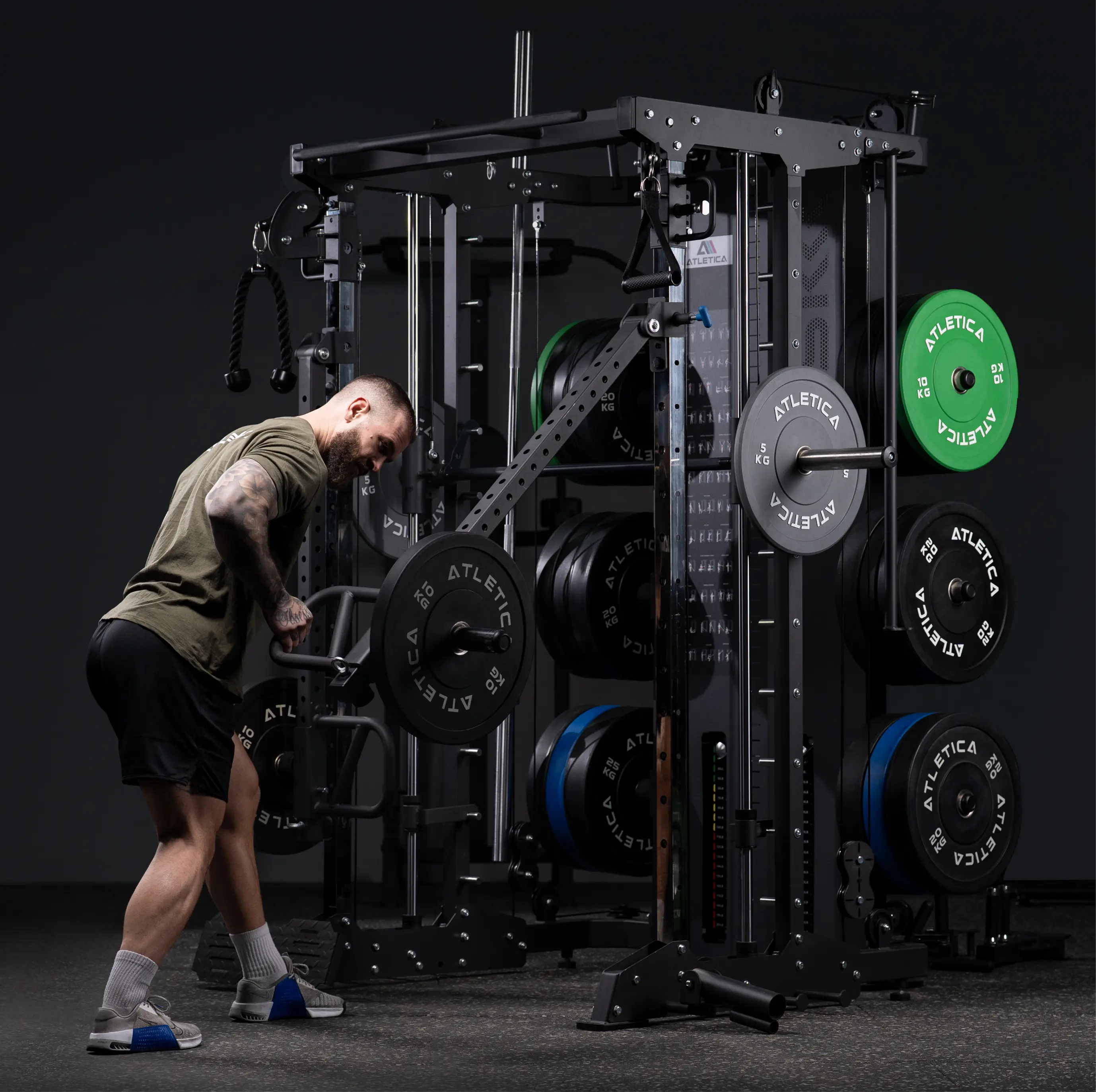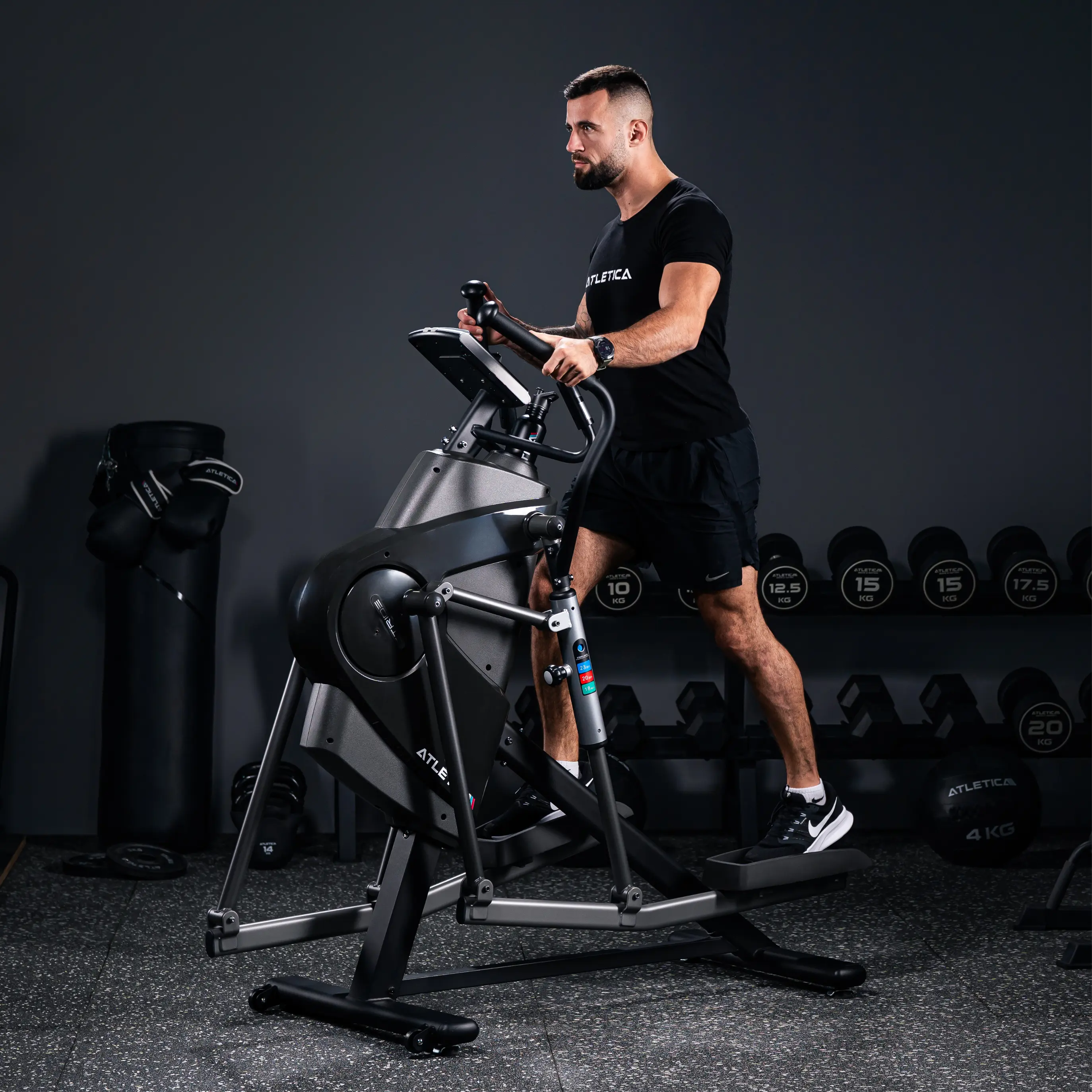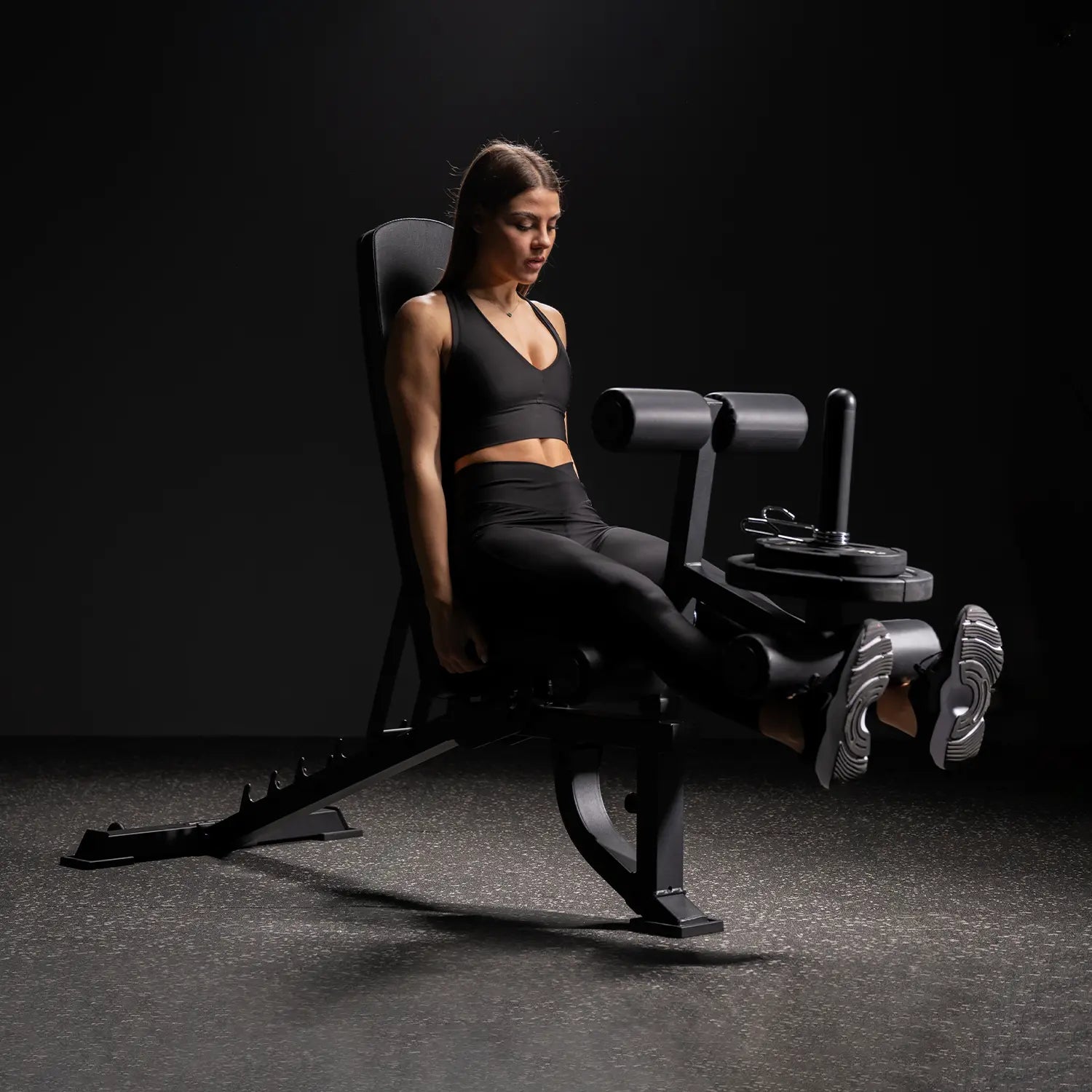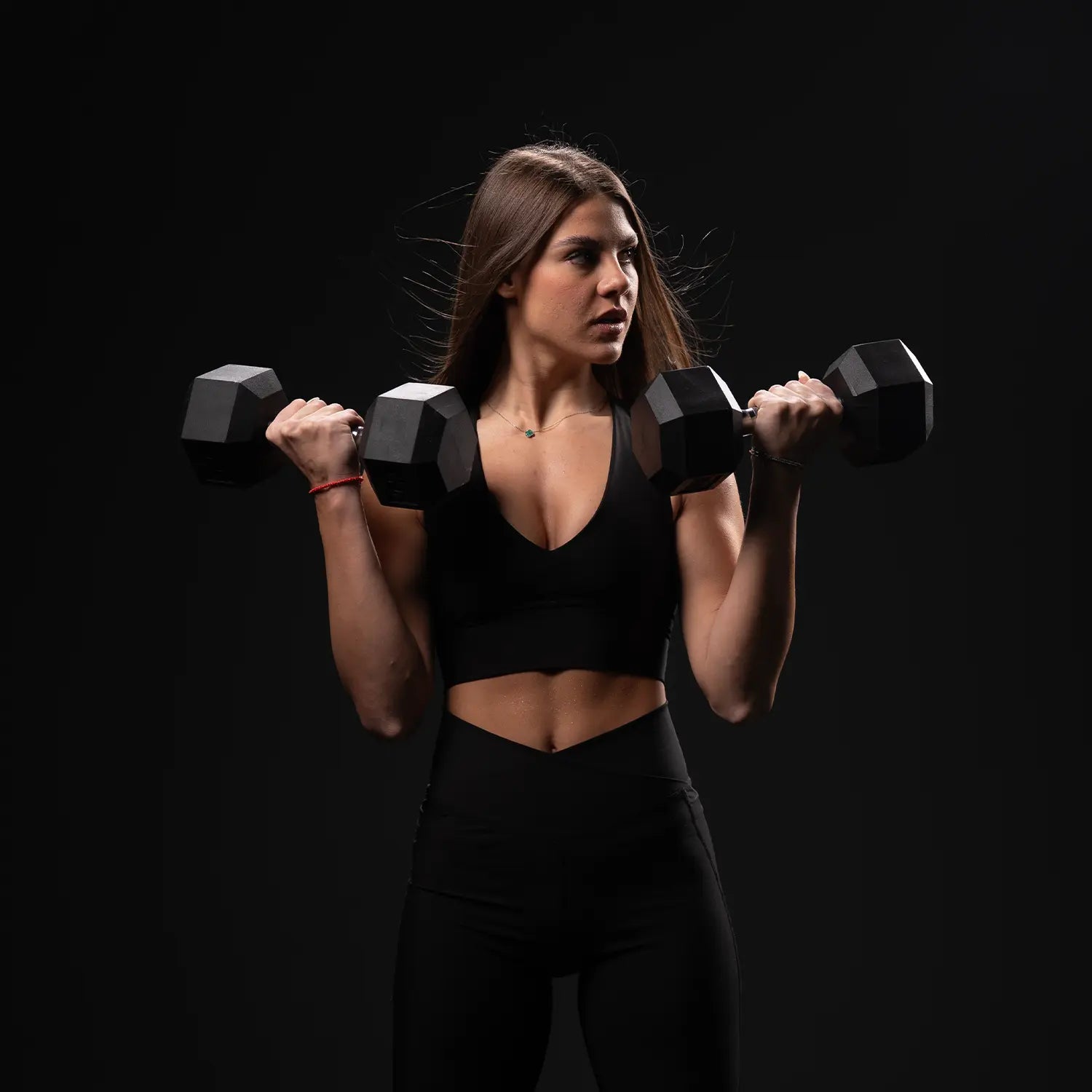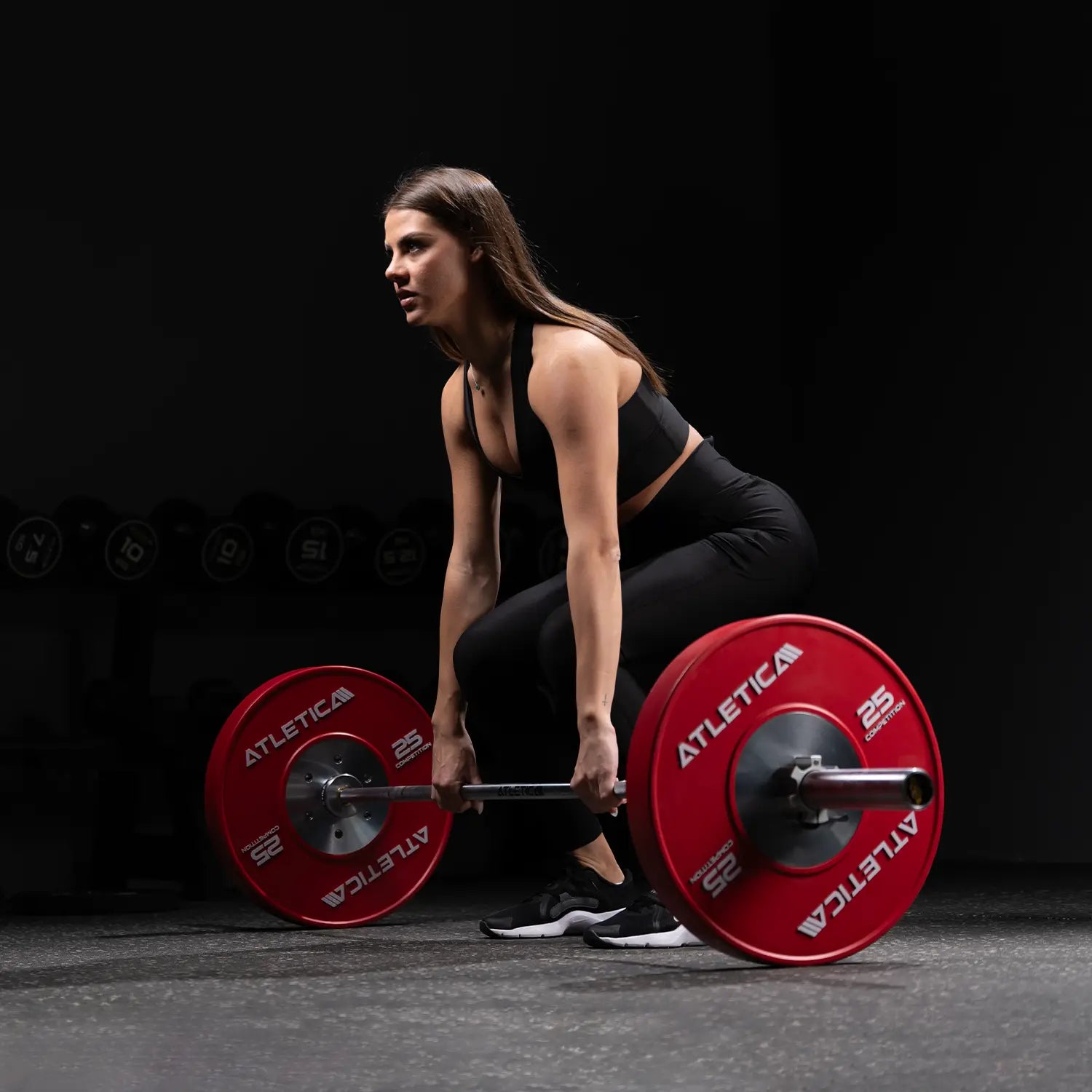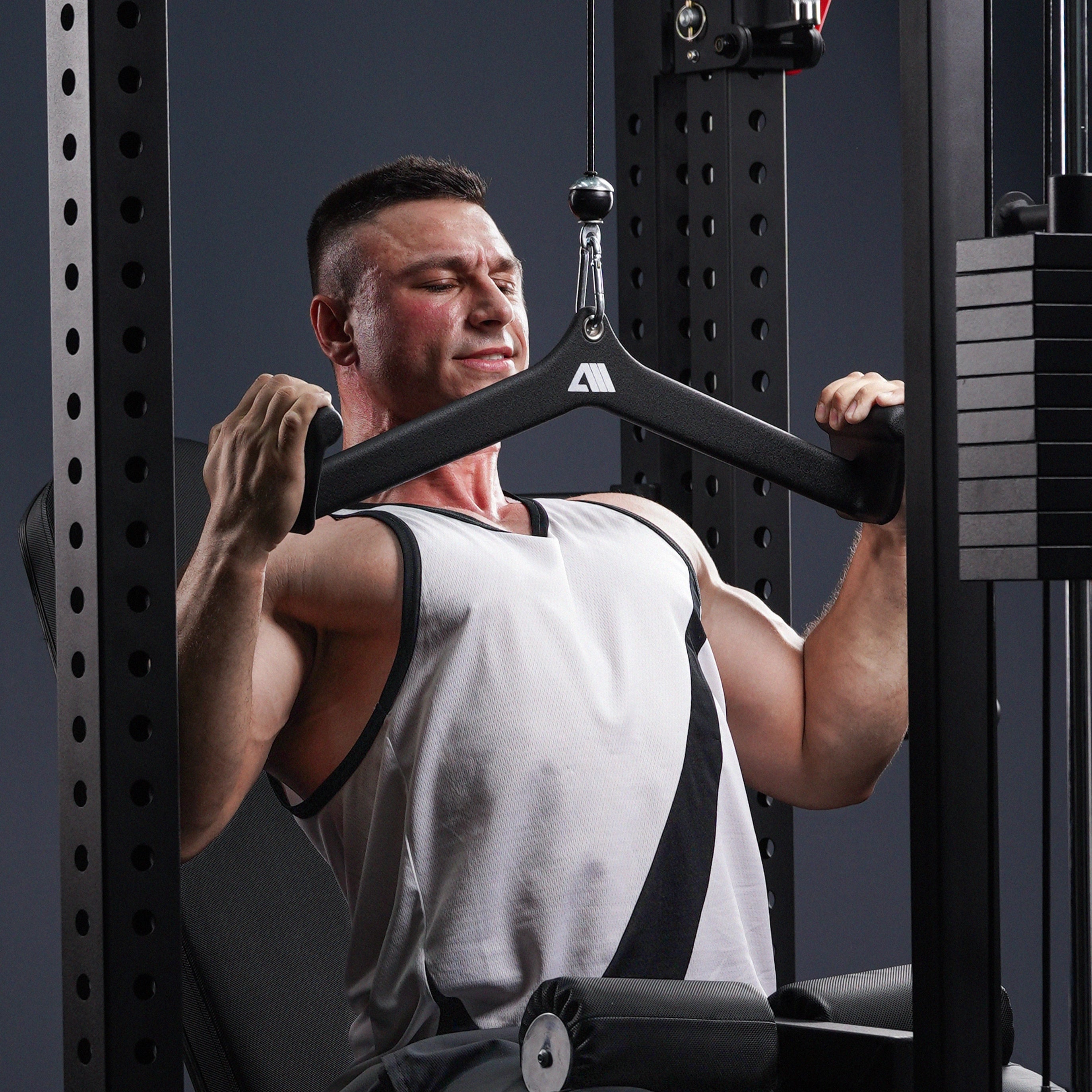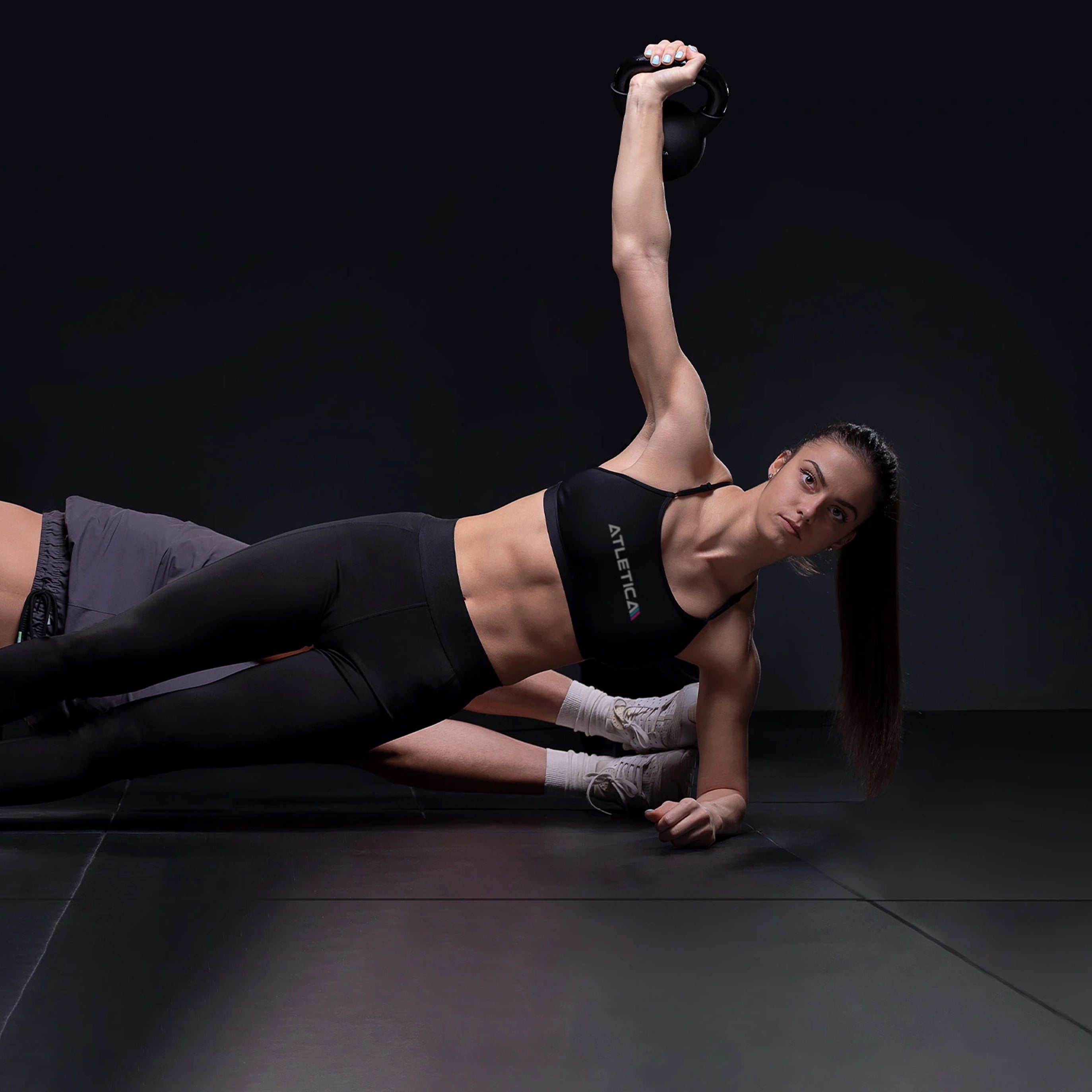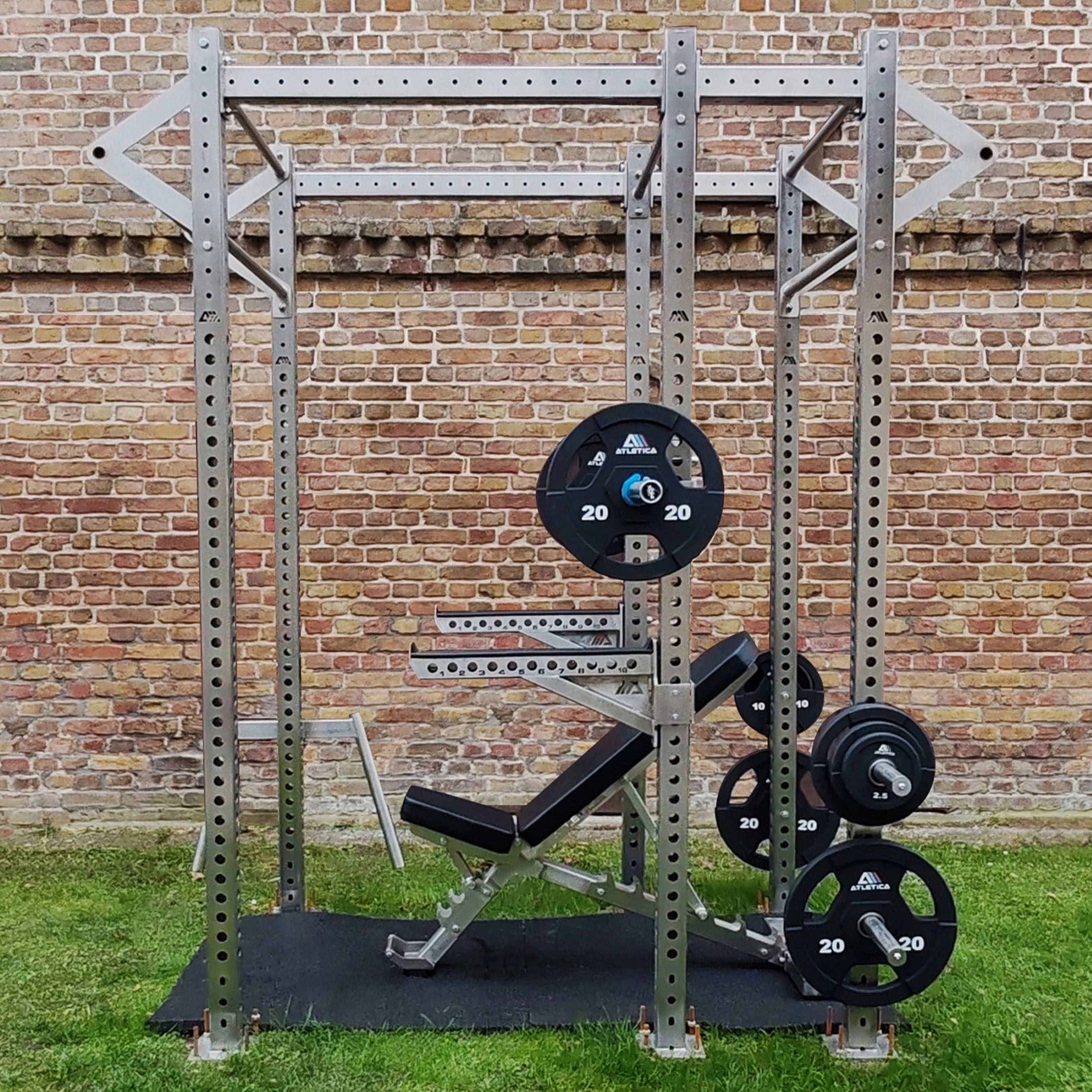Almost every woman knows them: small dimples on the thighs, buttocks, or stomach, which are particularly noticeable when pinched. We're talking about cellulite – also known as orange peel skin. But what's really behind it? Is cellulite a sign of poor fitness, or is there something you can do about it?
In this comprehensive guide, we explain exactly what cellulite is, its causes, and which training and nutrition strategies actually help. We rely on in-depth knowledge and practical tips – including targeted training methods using Atletica equipment.

1. What exactly is cellulite?
Cellulite is not a disease, but a completely normal structural feature of female connective tissue. The skin consists of several layers. Beneath the dermis lies the subcutaneous fat, which is divided into chambers by connective tissue septa. In women, these septa run perpendicular to the skin's surface, making it easier for the fat to protrude—especially when the tissue sags.
Cellulite is therefore a purely cosmetic phenomenon. It occurs in approximately 80–90% of all women, regardless of age or weight. It is extremely rare in men due to the different structure of connective tissue.
Another point: Cellulite isn't necessarily related to excess weight. Slim women can also be affected, because it's not weight that matters, but the structure of the connective tissue.
2. Causes of cellulite
Several factors contribute to the development of cellulite:
- Hormonal influences: Estrogens promote the storage of fat and water in the tissue. This condition can worsen during puberty, pregnancy, or menopause.
- Genetics : The structure of connective tissue and skin is hereditary. Some women naturally have weaker tissue.
- Lack of exercise : Less muscle activity means less blood flow and poorer lymph circulation. The result: toxins and water buildup.
- Unhealthy diet : Sugar, alcohol and high-salt foods promote water retention in the tissue.
- Stress : High cortisol levels have a negative effect on skin firmness.
- Smoking : Impairs microcirculation and worsens tissue oxygenation.
- Poor circulation : Tight-fitting clothing or prolonged sitting disrupts lymph flow.
3. Getting rid of cellulite: What really helps
There's no miracle cure for cellulite. But with a combination of exercise, nutrition, and skincare, the appearance of your skin can be significantly improved. The key lies in improving circulation, building muscle, and tightening connective tissue.
a) Strength training
Building muscle tightens the tissue from within. Exercises for the legs, buttocks, and core are particularly effective. Trained muscles are more effective at pushing back fatty tissue and making the skin appear smoother.
Examples with Atletica equipment:
- Bulgarian Split Squats with Dumbbells
- Step-ups on the plyo box
- Kettlebell swings for butt and back
- Hip thrusts with weight
- TRX lunges for balance and deep muscles
These exercises not only ensure toned legs, but also promote blood circulation and lymph flow – both crucial in the fight against cellulite.
b) Endurance training
Regular cardio sessions improve microcirculation, stimulate lymphatic flow, and support fat metabolism. Interval training is particularly effective.
Suitable equipment from Atletica:
- Indoor bike : Ideal for intensive sprints
- Elliptical trainer : gentle on the joints and efficient
- Rowing machine : full- body workout with high calorie consumption
Tip: 30 minutes of endurance training 3-4 times a week brings noticeable progress – combined with strength training, this creates a strong synergy.

c) Fascia and connective tissue training
Fascia rolling improves microcirculation, loosens adhesions, and supports lymphatic drainage. The effect: firmer skin texture.
Recommended tools:
- Fascia roller for thighs and buttocks
- Fascia ball for targeted massage
Tip : Using it after training in combination with alternating showers can further improve the results.
4. Nutrition for cellulite
A balanced diet has a direct impact on cell structure and tissue water balance. The goal is to prevent inflammation, promote blood circulation, and improve lymph flow.
do ' s:
- Fresh vegetables and fruit (high water and nutrient content)
- Drink plenty of water (2.5–3 liters/day)
- Protein-rich foods (quark, fish, lentils)
- Unsaturated fatty acids (avocado, nuts)
- Foods with potassium (bananas, spinach, potatoes) for dehydration
Don ' ts:
- Too much sugar and white flour
- Processed foods with additives
- Alcohol and too much caffeine
- Excessive salt (water retention!)
In addition, dehydrating teas (e.g. B. nettle or green tea) help to balance the water balance.

5. Care & Lifestyle Factors
a) Skin care
- Dry brushing: stimulates blood circulation, removes dead skin cells
- Alternating showers: train the vessels and promote elasticity
- Massages with anti-cellulite oils: can promote microcirculation
b) Reduce stress
High cortisol levels can promote the retention of fat and water in the tissue. Therefore, targeted stress management is an important component in the fight against cellulite.
Possible measures:
- Yoga or Pilates
- breathing exercises
- Walks in nature
- Digital Detox
c) Sleep & Regeneration
Only a rested body can regenerate. Those who get enough sleep have more stable hormone levels—and thus a better chance of having smooth skin.
Recommendation : 7–9 hours of sleep per night, if possible without interruption.
6. Prevent cellulite
Although cellulite can be genetic, it can be delayed or reduced through an active lifestyle.
Preventive measures:
- Regular training with a focus on legs and buttocks
- Daily exercise: climbing stairs, walking
- Drink enough water
- Targeted care with natural cosmetics
- Improve posture : strengthens muscles and optimizes blood circulation

Conclusion: Cellulite is not fate
Even if cellulite cannot always be completely removed, visible improvement is certainly possible . A holistic approach is essential: Regular strength and endurance training with Atletica equipment , a balanced diet, targeted skincare, and a healthy lifestyle provide the best conditions for firmer skin.
Consistency is the most important factor. Those who stick with it can enjoy defined legs, a better body image, and increased self-confidence. Cellulite is not a flaw – but those who want to reduce it today have many effective and scientifically proven ways to choose from.



